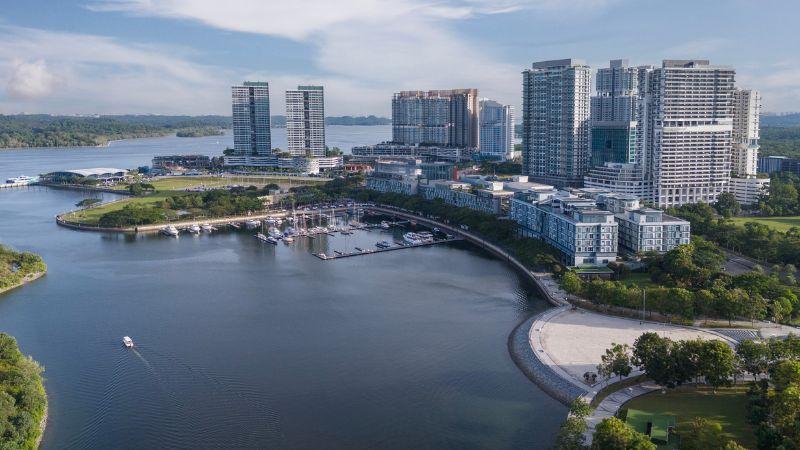Powering the future: Southeast Asia’s data centre boom

In the industrial parks on the outskirts of Johor Bahru, Malaysia, there’s a new game in town. The loud and chaotic electronic, chemical and consumer product factories are humming along, but a new kind of factory is springing up, driven by the silent pulse of data. Inside, rows of servers blink in rhythm, powered increasingly with renewable options like hydroelectric energy, and some cooled by advanced and sustainable liquid systems. This infrastructure represents the beating heart of Southeast Asia’s digital future.
Across the region, from Batam to Bangkok to Hanoi, the data centre industry is undergoing a transformation so rapid and expansive that it’s reshaping economies, urban planning, and even geopolitics. Once considered a peripheral player in the global tech landscape, Southeast Asia is now emerging as a critical node in the world’s digital supply chain.
The numbers tell the story
According to experts, the figures are staggering. The Southeast Asian data centre market, valued at US$13.71 billion in 2024, is projected to more than double to US$30.47 billion by 2030. Investment is pouring in from every direction: Hyperscale giants like AWS, Microsoft, Google and Meta are committing billions to build out infrastructure. AWS alone has pledged US$6 billion in Malaysia, with similar commitments in Thailand and Indonesia. Microsoft is investing US$2.2 billion in Malaysia and US$1.7 billion in Indonesia, while Google is building a hyperscale facility in Vietnam and has earmarked USD 1 billion for Thailand. Chris Tan, senior engineering specialist at FM, adds, “These figures represent more than just statistics —they’re signals of a tectonic shift in how the region is perceived and positioned. Southeast Asia is no longer just a consumer of digital services; it’s becoming a producer, a processor, and a protector of data.”
Why here, why now?
Several forces are converging to make Southeast Asia the ideal location for data centre expansion.
First, there’s the sheer scale of digital adoption. The region adds approximately 125,000 new internet users every day. Monthly data usage per person is expected to triple from 9.2 GB in 2020 to nearly 29 GB by 2025. This surge is driven by mobile-first economies, e-commerce booms, and a growing appetite for cloud services and AI applications.
Second, regulatory environments are evolving. Countries like Malaysia and Vietnam are implementing data sovereignty laws that require data to be stored locally. This has created a pressing need for domestic infrastructure, giving rise to a new generation of data centres designed to meet both compliance and performance standards.

Third, geography and economics play a role. Malaysia, for instance, offers lower land price and power than Singapore, making it an attractive alternative for hyperscale operators. Batam, just across the strait from Singapore, is emerging as a strategic location for cross-border data flows. Vietnam and Thailand, meanwhile, are seeing rapid growth thanks to government incentives and a burgeoning tech ecosystem.
The new urbanism of data
Data centres have become more than just technical facilities—they’re architectural statements and urban anchors. In Hanoi, Viettel IDC’s newest centre is a sleek, energy-efficient structure that uses 30% renewable energy and is designed to accommodate AI workloads. In Singapore, where land is scarce and regulations are tight, new builds are compact, vertical, and hyper-efficient. Microsoft’s 20-year solar power purchase agreement in Singapore is a model for sustainable urban integration. This new urbanism of data is influencing everything from zoning laws to workforce development. Governments are racing to train engineers, electricians, and cooling specialists to meet demand. Yet, a global shortfall of 4.3 million skilled data centre workers looms by 2030, posing both a challenge and an opportunity for the region.
"Southeast Asia is no longer just a consumer of digital services; it’s becoming a producer, a processor, and a protector of data.”
Greenovation
We all know by now that sustainability is no longer optional—it’s a competitive advantage. Operators are investing in renewable energy, advanced cooling systems, and carbon offset programs. AIMS Data Centre in Malaysia has recently launched a community solar project to source solar power. Etix Everywhere, a French operator expanding in the region, aims to run entirely on renewables by 2030.
Liquid cooling, once a niche technology, is becoming mainstream as AI workloads push thermal limits, with AirTrunk predicting that in the near future, 30-60% of all AI data centre capacity will be liquid cooled.
These innovations are both technical and cultural, reflecting a shift in how Southeast Asia sees its role in the global climate conversation.
Risks and resilience
Yet, as data centres become more critical, so too do the risks they face. Globally, these facilities are vulnerable to resource constraints, power outages, and cooling system failures—any of which can disrupt services and compromise sensitive data.
In Southeast Asia, these risks are compounded by regional challenges: eExtreme weather events such as typhoons, floods, and heatwaves pose physical threats to infrastructure, while varying regulatory landscapes and energy grid reliability add layers of operational complexity. According to Tan, “Building resilience into these centres—through robust contingency planning, climate risk mitigation design, and robust and redundant of power systems—is not just prudent, but essential for sustaining the region’s digital momentum.”
The region’s diversity is its strength. While Singapore remains a premium hub, Malaysia offers scale, Indonesia provides reach, Vietnam delivers agility, and Thailand brings innovation. Together, they form a mosaic of opportunity that’s attracting capital, talent and vision.
Looking ahead
As we move deeper into the age of AI, cloud computing, and edge networks, Southeast Asia’s data centres will become more than just storage facilities. They’ll be engines of innovation, platforms for collaboration, and symbols of sovereignty; with a final word from Chris Tan. They are not merely constructing data centers; they are shaping the future of Southeast Asia;”
And that future, it seems, is already arriving—one blinking server at a time.
